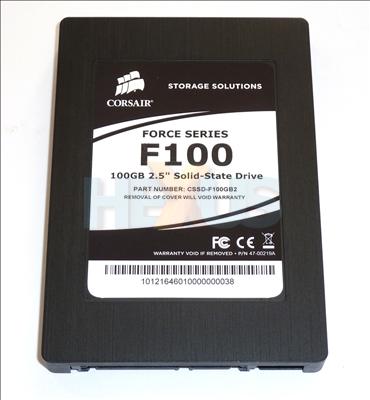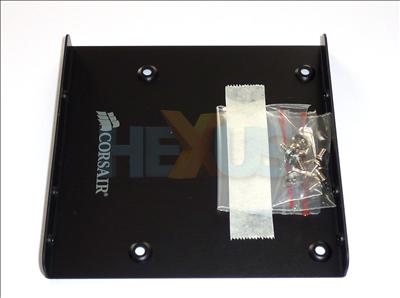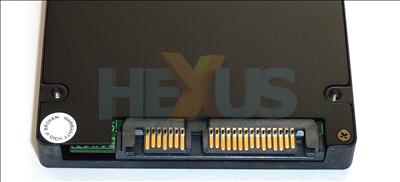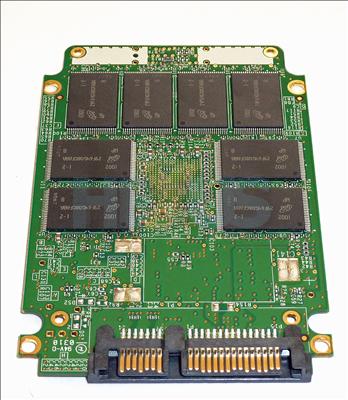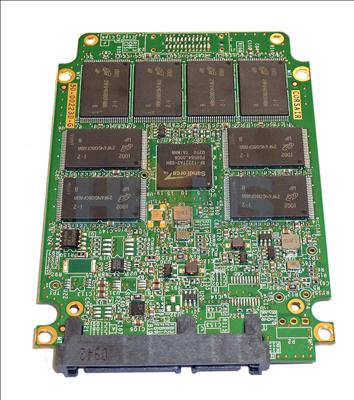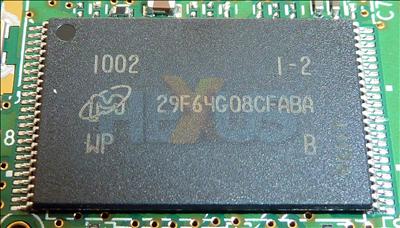We received a new solid-state drive from Corsair late yesterday afternoon. Breaking open the UPS box highlighted that it was the F100, part of the Force range, and distinguished by being powered by the much-talked-about SandForce controller.
The Corsair F100's presented in the standard black aluminium casing and 2.5in form factor. As the name suggests, it has a 100GB capacity that formats down to some 93GB in Windows.
Priced at £320 for this model and £557 for the double-capacity F200, both drives attract a reasonable premium over established models that are powered by, in the main, Indilinx, Intel and Samsung controllers.
Corsair thoughtfully includes a bracket that enables the drive to be housed in a 3.5in bay.
The left-hand connector is still SATA 2 (3Gb/s) spec.
A look at the PCB shows that the Force F100 uses 16 chips - eight on each side - from Micron. Each chip is 8GB, intimating a 128GB SSD-wide capacity, but Corsair/SandForce plays the game safe by opting for a 100GB capacity and leaving plenty of (and perhaps too much) spare room for over-provisioning.
Here's one of the Micron chips that connects up to the controller.
So why the extra cost over other premium SSDs, then?
SandForce at the helm
The main reason has to do with the controller used. The F100 employs the SF-1200 processor from SandForce, and the company rates it to 260MB/s write and 260MB/s read, based on 128K blocks, and, probably more importantly for the target environment, read/write 4K IOPS of 30,000 and 10,000, respectively. SandForce also has a 'higher-specified' controller, SF-1500, which can also interface with enterprise-class SLC NAND in addition to widely-used MLC.
Speeds are healthy, of course, but SandForce makes a point of stressing optimisations pertaining to writes for the NAND memory. In particular, its DuraWrite technology seeks to extend the life of SSDs by minimising on write amplification - the amount of NAND writing actually required for certain-sized data, where larger-than-needed blocks are copied into main system memory and then back to the NAND - to a figure below one. In short, you don't want to write more blocks than is absolutely necessary, and lesser controllers often have write amplification of 10x, or more.
The design of the controller, low write amplification, and intelligent wear-levelling techniques means that SandForce can do without a supporting buffer chip; there is no on-SSD cache here. SF-1200 also supports TRIM and 128-bit AES encryption, too.
On the face of it, a SandForce-equipped SSD straddles the client and enterprise spaces. Corsair's taking advantage of it with the Force series here, but many other companies are using the same combination of controller and NAND and marketing their own high-end SSDs.
So how fast can the Force F100 be? Glad you asked.
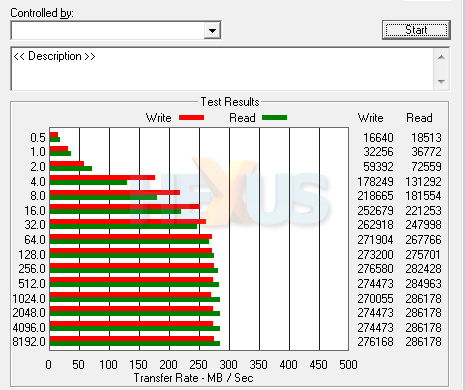
Here's the standard ATTO benchmark that uses a 256MB length and runs from 0.5K through to 8,192K block transfer size. Impressive write speeds, clearly.
Stay tuned for the full review next week.



